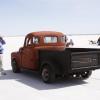-
Posts
9,387 -
Joined
-
Last visited
-
Days Won
86
Merle Coggins last won the day on December 19 2024
Merle Coggins had the most liked content!
Reputation
2,042 ExcellentAbout Merle Coggins
- Birthday 03/29/1967
Profile Information
-
Gender
Male
-
Location
Menasha, WI
-
My Project Cars
1950 Dodge B-2-C-116
Converted
-
Location
Waukesha, WI
-
Interests
Motorcycling, working on my truck
Contact Methods
-
Occupation
Technical trainer for a Construction Equipment Dealership
-

51 B3B build thread - after all these years
Merle Coggins replied to bkahler's topic in Mopar Flathead Truck Forum
Did you do a disc brake conversion on the front axle? If so this will require shortening the tie rod. At least that was the case with my Rusty Hope kit. The caliper mounting plate moves the steering arms inboard and I found that my tie rod didn't have enough adjustment to compensate for this. I ended up trimming off an equal amount off of each end and reinserting the tie rod ends. This gave me the adjustability that I needed. -

Questions on 54 C-1 truck project
Merle Coggins replied to 888's topic in Mopar Flathead Truck Forum
I have not seen that type of filter canister with a bolt on lid, but if you can identify the proper filter cartridge there's no reason why it won't work for you. As you said, many filters were aftermarket installs on these trucks. You'll need to determine which ports on the filter canister are Inlet and Outlet and make up new lines to connect to your engine. I took your photo and labeled the plugs for you as you seemed unsure how to connect it. You may also want to search for the correct coil mounting bracket as this one seems to be home made. -

Remove Door Latch Assembly 1948 B1B
Merle Coggins replied to Dodging Work's topic in Mopar Flathead Truck Forum
Allow the rod that goes to the inside handle pivot to rotate down so that it is parallel to the window track. This will allow the latch assembly to rotate out around the window track. At least that's how I remember finally getting mine out. -

'47 Plymouth axle seals replacement - correct seals
Merle Coggins replied to sjaakslinger's topic in P15-D24 Forum
Remove the brake backing plate. The outer seal in pressed into that anyway. Once you have that out of the way you'll need to pull the axle shaft. You may need to rig up a puller, or slide hammer to pull the axle. The inner seal is behind the wheel bearing. When you go back together you'll want to clean and repack the bearing with grease. -
What part of 'Sconsin are you in?
-
I would have welcomed 28 degrees this morning. We had -8. I'm sure it was colder farther north, as I'm in the Milwaukee area this week.
-
From what I've seen the C-series changed the bell housings to be more like that used in the cars. However, everything forward of the bell housing should be pretty much the same. Just use your bell housing on that engine block and it should all be good.
-
Send that speedo face off to Keven Paddy, aka B1B Keven. He does vinyl overlays that'll make it like new again.
-
I ran those cheap Peterson tail lights for several years before I bought a set of reproduction 'vintage' Dodge tail lights. I like the look with the 'DODGE' logo in the lenses, but the Peterson lights were better quality in regards to the light socket and wiring.
-
Aren't many of the vehicles at the Volo Car Museum also for sale too? I've been through that place a couple of times.
-
The diode is those type of relays is a quenching diode that is used to protect the switching circuit from arcing. Maybe that's just another way of saying what Sniper said, "to prevent back EMF". Some relays use a resistor for this purpose. Those with the resistor wouldn't be polarity sensitive, but the diode ones certainly are.
-
I've done that several times too. It works well. I've also seen a procedure for our flat head engines where you dunk the pump in oil and turn the pump by hand until it purges all air out of it. Then install it, with it full of oil. Apparently this is also sufficient for the pump to be able to pull up oil from the sump upon first startup.
-
I didn't realize there was a lowside bed option for the B-Series 3/4 ton trucks. I though it was only a 1/2 ton option. The 3/4, and 1 ton, beds are wider and don't need those removeable skirts for spring shackle maintenance. At least there isn't any on my highside bed.
-
There is a different front track that will need to be sourced and installed into the door. Then, after you remove the vent window you will need to cut out, or bend out of the way, two mounting tabs under the vent window.I believe the window regulators are the same. I’m not sure if the bottom glass brackets are interchangeable.
















